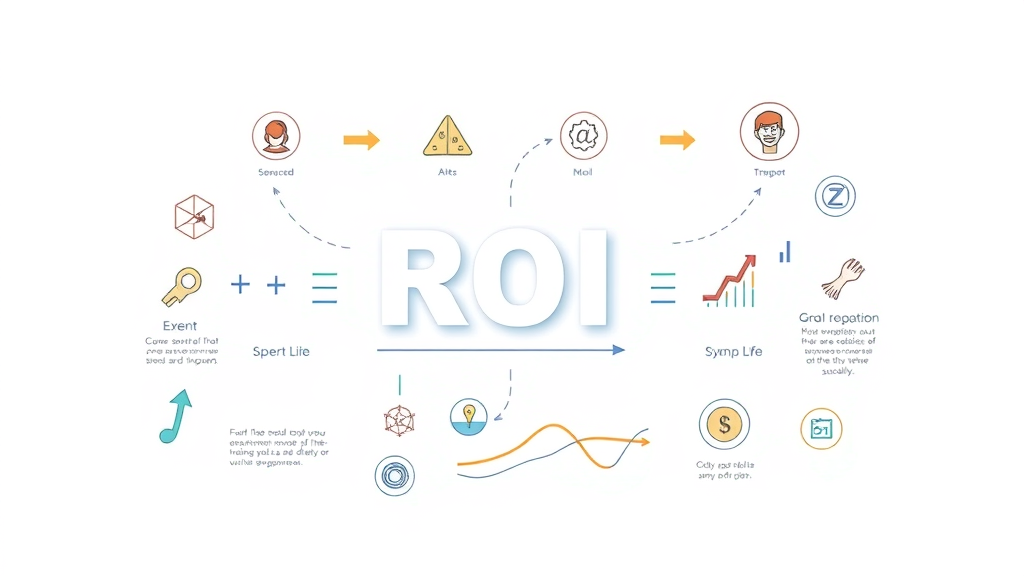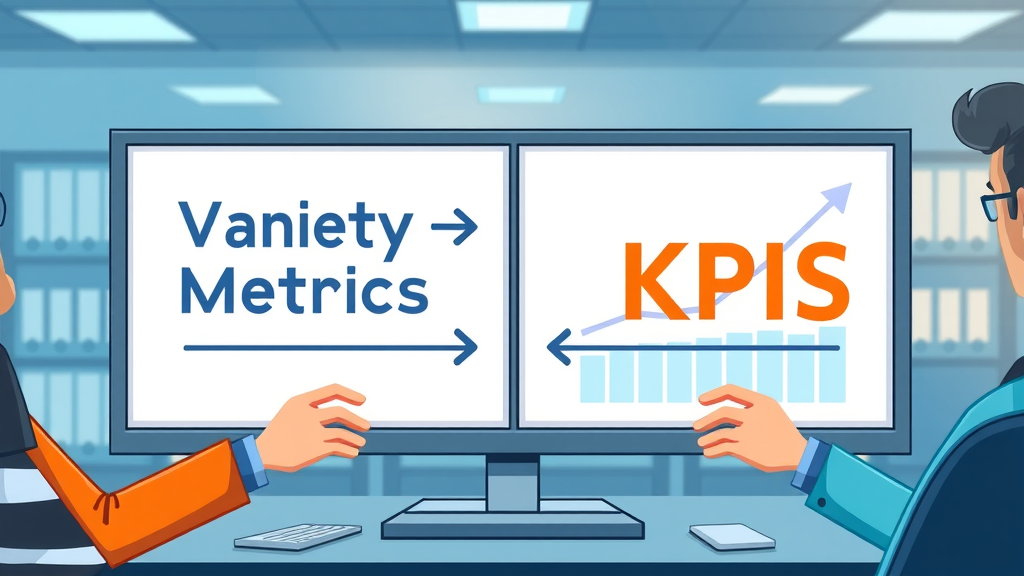
"A 2023 industry survey revealed that over 62% of marketers cannot accurately measure their content marketing ROI, leading to costly missteps." – [Data Source]
Did you know that more than 62% of marketers fail to measure their content marketing ROI accurately? This single flaw can undermine even the most creative content strategy, wasting time and budget on campaigns that never deliver true business value. Understanding and correcting one central mistake in your approach can mean the difference between marketing success and missed opportunities. In this comprehensive guide, you’ll uncover the critical pitfall, learn how to set and measure the right key performance indicators, and discover the best analytics tools to ensure every marketing campaign drives measurable impact.
What You'll Learn About Content Marketing ROI
- What content marketing ROI is and why it matters
- The most common mistake when measuring content marketing ROI
- How to set the right key performance indicators (KPIs)
- How to use analytics tools for precise ROI tracking
- Best practices for boosting your content marketing success
Understanding Content Marketing ROI: Definition, Importance, and Role in Marketing Strategy
What is Content Marketing ROI?

Content marketing ROI stands for return on investment gained from executing a content marketing strategy. It’s a metric that measures the total revenue or value generated from content marketing efforts, against the costs, such as content creation, production, distribution, and amplification. In simple terms, it tells you whether your blog posts, videos, emails, and social campaigns are helping grow your business or just draining resources. This goes beyond surface statistics like page views or social media shares; instead, it calculates tangible business impact—like lead generation, sales, or boost in brand awareness. If your marketing campaign spends $1,000 and returns $3,000 in tracked leads or sales, the ROI is a robust 200%. Tracking ROI helps marketing teams prioritize what truly works, avoid expensive pitfalls, and justify content budgets to leadership—demonstrating how every piece of content supports broader business objectives.
Why Content Marketing ROI Is a Core Element of Marketing Strategy
Integrating content marketing ROI within your wider marketing strategy ensures that every content piece you produce serves a specific business goal rather than just making noise online. ROI provides the feedback loop marketers need to steer their marketing strategy, allocate resources wisely, and demonstrate real value to internal and external stakeholders. A strong focus on ROI also empowers marketers to prove the worth of their content marketing efforts by pointing to measurable increases in organic traffic, conversion rates, or brand awareness. In a results-driven era where every dollar counts, ROI transforms content marketing from an expense into a profit-driving engine, making it central to every effective content strategy.
The Link Between Content Marketing ROI and Overall Marketing ROI
Content marketing ROI doesn't exist in isolation. It's a vital component of your company’s overall marketing ROI, as it often drives organic traffic, nurtures leads, and facilitates conversions across the entire customer journey. Superior content boosts search engine rankings, maximizes social media interactions, and enhances email marketing response rates. When tracked correctly, these figures feed directly into your main performance indicators, influencing decisions about future marketing strategies and spend. Ignoring content in ROI calculations can create blind spots, ultimately warping your sense of what channels and tactics actually deliver the highest value for every marketing dollar invested.
As you refine your approach to measuring ROI, it's equally important to ensure your content stands out and truly engages your audience. For actionable ideas on crafting posts that drive real results, explore these expert tips on social media content creation that captivates audiences and elevates your brand’s impact.
Exploring Content Marketing ROI Through Real-World Examples

Consider a company that launches a new blog series to connect with its target audience. By investing $2,500 in research, writing, and design, they generate 500 new leads, 200 social media shares, and grow organic traffic by 25% over three months. Using analytics tools like Google Analytics and HubSpot, they track how these leads progress to conversions on their landing pages. The resulting sales value proves these content marketing efforts outpaced previous paid ad campaigns, delivering a much higher return on investment. This example highlights why it’s essential to measure ROI consistently—so each marketing effort can be fine-tuned for even greater success.
The One Content Marketing ROI Mistake That Can Derail Your Content Strategy
"Focusing solely on vanity metrics will never reveal your true content marketing ROI." – Industry Expert
Misaligned Metrics: Vanity Metrics vs Key Performance Indicators

The biggest and most costly mistake in content marketing ROI measurement is equating vanity metrics—such as likes, shares, or total page views—with marketing success. While these numbers can provide a quick dopamine hit, they often fail to demonstrate direct business value. It’s more productive to focus on key performance indicators (KPIs) like conversion rate, lead generation, and sales attribution that align closely with your content marketing strategy objectives. Relying on vanity metrics leads marketers down the wrong path, as they can't prove the impact their marketing efforts have on business outcomes or justify continued investment. In contrast, KPIs reveal the underlying truth about your content strategy, exposing weak spots and highlighting areas poised for exponential growth.
How This Misstep Impacts Your Content Marketing Campaign
When you base marketing decisions solely on vanity metrics, you risk pouring resources into activities with minimal return on investment. For instance, a viral blog post might attract thousands of visitors—yet if none become potential customers or engaged leads, your content is falling short of its marketing strategy goals. Marketers who fail to track key metrics like landing page conversions or organic traffic growth end up with wasted budget, diminished brand credibility, and poor stakeholder buy-in for future marketing strategies. Ultimately, this misalignment can cause promising campaigns to falter, with businesses missing opportunities to refine their processes for measurable improvement.
Content Creation Pitfalls That Undermine Content Marketing ROI
Even the best content marketing strategy can falter if the content creation process prioritizes quantity over quality. Rushed or generic content pieces rarely appeal to your target audience or drive meaningful engagement. Other pitfalls include failing to align content with the customer journey, overlooking SEO best practices for organic traffic, or ignoring performance indicators like conversion rate and lead generation. Each misstep compounds, causing even the most well-intentioned marketing efforts to fall short of expected marketing ROI. Focusing on high-impact, relevant content, measured by the right KPIs, is essential for boosting both immediate performance and long-term content marketing success.
Case Study: When Good Marketing Efforts Fail Without the Right ROI Focus
Imagine a SaaS startup that invests heavily in video content for social media. Their campaign garners impressive social shares and a spike in page views, but almost no sign-ups or trial requests—because the strategy failed to map KPIs to business outcomes. By focusing only on flashy metrics and neglecting conversion rate and actual lead generation, their content marketing campaign ultimately provided little marketing ROI. When they re-oriented their approach, updating content to align with the customer journey and tracking qualified leads and conversions, their next campaign delivered measurable business impact. This example underscores why a focus on deep metrics is essential for marketing success.
Key Performance Indicators for Achieving Strong Content Marketing ROI
Identifying the Right Key Performance Indicators (KPIs)

Choosing the right key performance indicators is the foundation for reliable content marketing ROI measurement. KPIs should reflect your marketing strategy objectives—whether that’s increasing organic traffic, improving conversion rates, boosting brand awareness, or nurturing leads along the customer journey. Start by mapping out your most important business goals, then link each to a measurable performance indicator. For example, traffic growth may be tracked by unique visitors or returning users; engagement by average time on page or download rates; conversions by form submissions or sales generated. The key is to measure what matters so that every content marketing effort is contributing meaningfully to your business’s bottom line.
Measuring Organic Traffic to Assess Content Marketing ROI
One of the most reliable signals of content marketing success, organic traffic tracks how visitors arrive at your website from search engines or organic links rather than paid ads. Increased organic traffic means your content is ranking well in search engines and truly resonating with your target audience. By examining how traffic fluctuates in response to individual content pieces or marketing campaigns, marketers can isolate which types of content drive the most high-quality leads, guiding future content creation and distribution. Accurate measurement, using analytics tools, reveals the real impact of your content strategy on broader marketing ROI, helping teams fine-tune campaigns for the greatest impact.
Role of Social Media Metrics in Marketing ROI
Social media plays a crucial role in spreading brand awareness, increasing reach, and driving traffic to a landing page or website. However, not all metrics are equal. While likes and retweets are encouraging, prioritize deeper metrics—such as share of voice, comments, link clicks, and conversions originating from each social platform. By tracking how social engagement influences content marketing ROI, you gain a clearer picture of which social media strategies generate tangible results, refining your approach to maximize marketing effectiveness. Integration with other analytics tools allows marketers to attribute revenue and conversions back to specific social media campaigns—bringing the full strategic value of social to the surface.
Integrating Email Marketing Results in Your Marketing Strategy
Email marketing is a powerhouse for lead nurturing in nearly every content marketing strategy. Measuring open rates, click-through rates, and conversions from targeted email campaigns helps teams understand which content pieces resonate and drive action. By tying email performance into your overall marketing ROI framework, you can pinpoint which messages and offers push users further along the customer journey. Consistently linking email metrics to website visits, sign-ups, or purchases ensures that every part of the funnel is performing efficiently and making your overall content marketing efforts more productive and profitable.
Tracking Engagement and Conversions: The Heart of Content Marketing Success
At the core of marketing success is the ability to turn engagement into measurable business results. Track KPIs like session duration, bounce rate, and engagement with interactive content—then dig deeper to capture conversion rate, downloads, demo requests, and purchases. These insights help marketers understand exactly how, where, and why their strategies succeed. Understanding true engagement and conversion allows every department to align tactics, optimize future campaigns, and ultimately increase content marketing ROI. The ability to translate data into actionable strategy separates top-performing content teams from those flying blind.
| Campaign Type | Traffic KPIs | Engagement KPIs | Conversion KPIs | Retention KPIs |
|---|---|---|---|---|
| Blog Posts | Organic Visits, Return Users | Time on Page, Shares | Lead Form Submissions | Newsletter Sign-Ups |
| Social Media | Referral Traffic | Comment Rate, Shares | Link Clicks, Signup Conversions | Follower Retention |
| Email Campaigns | Open Rates | Click-Through Rate | Conversions, Purchases | List Growth |
| Landing Pages | Unique Visitors | Bounce Rate, Scroll Depth | Form Completions | Repeat Visits |

Best Analytics Tools for Measuring Content Marketing ROI
Top Analytics Tools for Tracking Content Marketing Campaigns

Selecting the right analytics tools is vital to unlocking your content marketing ROI. Top tools like Google Analytics, HubSpot, and SEMRush provide in-depth data tracking for everything from organic traffic and conversion rate to detailed customer journey touchpoints. Google Analytics offers robust web data and custom dashboards; HubSpot streamlines contact and campaign tracking; SEMRush focuses on SEO and keyword insights. Each analytics tool helps you tie specific content marketing campaigns to measurable outcomes, making it easier to justify budgets and refine marketing strategy.
Integrating Analytics Tools into Your Content Marketing Strategy
Integrating analytics tools into your overall content marketing strategy ensures consistent tracking from initial content creation through final conversion. Set up tracking codes on all digital assets, link data sources together, and create regular reports on key performance indicators. By mapping analytics to the entire customer journey, marketers can uncover trends, attribute revenue to specific content pieces, and quickly pivot marketing efforts. This process turns raw numbers into actionable insights, maximizing the effectiveness of every content marketing campaign you launch.
How to Interpret Data to Improve Your Content Marketing Efforts
Analytics data is only valuable when it fuels better decision-making. Identify what’s working by comparing current results against benchmarks for organic traffic, engagement, and conversion rates. Dig deep to uncover hidden patterns, test hypotheses with A/B experiments, and evaluate the real cost versus the true marketing ROI of each effort. Use these insights to optimize landing pages, refine messaging, and prioritize new content ideas. By continually interpreting and acting on data, your entire content marketing strategy remains agile, effective, and squarely focused on measurable business growth.
"Analytics tools are only as powerful as the questions marketers ask." – Analytics Expert
Building a High-Impact Content Marketing Strategy with ROI in Mind
Aligning Content Creation with Content Marketing ROI Goals
High-impact results are only possible when content creation is directly linked to core business objectives and content marketing ROI goals. Define key topics, formats, and channels that reflect what your target audience wants and what moves them along the customer journey. Plan each piece of content to contribute to clear performance indicators—such as driving organic traffic, increasing engagement, or generating qualified leads. When creators and strategists work together toward shared ROI goals, the quality and impact of every marketing effort improve dramatically.
From Marketing Campaign Concept to Measurable Results

Turning big marketing ideas into measurable results means weaving ROI thinking into every step of the campaign—from brainstorming to completion. Set clear objectives and KPIs before launch. Use analytics tools to track responses in real time, adjusting strategies as data emerges. Solicit team feedback, test content elements, and iterate continuously to maximize marketing ROI. By making ROI measurement a habit, every campaign generates insights that drive even greater success in future efforts.
Optimizing Email Marketing, Social Media, and Organic Traffic for Marketing Success
Siloed marketing won’t cut it. The strongest content strategies integrate email marketing, social media, and organic traffic efforts for a holistic approach. Use cross-channel data to understand which messages, creatives, and distribution tactics perform best. Tweak sequences, timing, and targeting based on real-time analytics. Encourage teams to share key findings, so lessons learned with one channel can benefit others. The result: increased engagement, stronger lead generation, and ever-higher content marketing ROI across your entire marketing strategy.
- Conduct audience research regularly
- Set measurable ROI goals for each campaign
- Use content marketing analytics in real time
- Iterate marketing strategies based on analytics
- Document every marketing effort and result
Common Questions About Content Marketing ROI
What is the ROI of content marketing?
Answer
The ROI of content marketing measures the value gained from your content marketing efforts relative to the resources invested. It’s calculated by taking the revenue (or another target metric such as leads or signups) generated from a marketing campaign and dividing it by the cost of content creation, distribution, and promotion. This quantifies how efficiently your content is driving business growth compared to other marketing strategies. A high content marketing ROI means your strategy effectively turns content into tangible business outcomes.
What is the 70 20 10 rule in content marketing?
Answer
The 70-20-10 rule is a popular marketing strategy framework for content creation. It suggests that 70% of your content should be core topics that reliably attract your audience, 20% should be more creative or experimental content that pushes boundaries, and 10% should be innovative or risk-taking content designed to explore new ground. This balance ensures your marketing campaign remains fresh, data-driven, and continues to grow your content marketing ROI without relying on tired tactics.
What is the average ROI on marketing?
Answer
While ROI can vary by industry and channel, a common benchmark for marketing ROI is around 5:1, meaning $5 in revenue for every $1 spent. However, exceptional content marketing campaigns may deliver much higher returns—sometimes exceeding 10:1—especially when leveraging organic traffic, search engine optimization, and targeted social media strategies to reach the right audience. The most successful content marketing efforts deliver consistent, measurable value well above average.
What does a 24% ROI mean?
Answer
A 24% ROI means that for every $1 you invest in your marketing campaign, you receive $1.24 in return—indicating a net gain of $0.24 on each dollar spent. In content marketing, this percentage helps you assess the efficiency and value of your marketing strategies. The higher the ROI percentage, the more profitable your content marketing strategy is for your business.
Tips & Best Practices for Maximizing Content Marketing ROI
- Continuously monitor and adapt your marketing strategy
- Leverage analytics tools to track real performance indicators
- Balance content creation between long-form and snackable content
- Engage with organic traffic through active community management
- Align team goals with measurable marketing ROI objectives

Avoiding Additional Mistakes: How to Future-Proof Your Content Marketing ROI
Diversifying Your Content Marketing Strategy for Resilience

The marketing world evolves rapidly, with new platforms and shifting consumer behaviors challenging even the best strategies. To future-proof your content marketing ROI, diversify your approach—experiment with podcasts, video, interactive content, and new social channels. Use data to identify emerging trends and adjust your content creation and distribution strategies to stay ahead of competitors. This approach not only safeguards current performance but also puts your business at the forefront of content marketing success for years to come.
Using Data-Driven Insights To Optimize Future Marketing Campaigns
High-performing marketers dig deep into analytics tools and KPI dashboards at the end of every marketing campaign. By analyzing what worked—and what didn’t—they turn every marketing effort into a learning opportunity. Use this intelligence to refine your performance indicators, set stronger benchmarks, and experiment with creative new tactics. Data-driven optimization ensures that your content strategy becomes smarter, more efficient, and more profitable with each new campaign.
"Leaders who future-proof their marketing efforts consistently see exponential growth in content marketing ROI." – Digital Strategy Leader
Key Takeaways: Ensuring Content Marketing ROI Drives Marketing Success
- Content marketing ROI must guide your entire content strategy
- Avoid the one mistake of focusing only on vanity metrics
- Set meaningful KPIs for accurate measurement
- Use advanced analytics tools for informed marketing decisions
- Continuously refine your marketing efforts for sustained ROI
FAQs on Content Marketing ROI Best Practices
-
How soon can I expect to see ROI from a new content marketing campaign?
Most brands start seeing measurable ROI within 3–6 months, depending on industry, campaign scope, and marketing strategy maturity. -
What analytics tools best suit small businesses for content marketing ROI?
Google Analytics and HubSpot are top picks for their user-friendly dashboards and comprehensive tracking features. -
Should paid social media be included in my content marketing ROI calculations?
Yes, for a full picture of ROI, include both organic and paid social media results when analyzing your performance indicators. -
How do I convince company leadership of content marketing ROI value?
Present clear, data-backed KPIs showing conversion rate, lead generation, and cost per acquisition to demonstrate ROI impact. -
What is the role of SEO in driving content marketing ROI?
SEO increases organic traffic and brand visibility, directly contributing to lead generation and positive marketing ROI.
Conclusion: Your Next Steps to Boost Content Marketing ROI
Summing Up: Avoiding the Biggest Mistake in Content Marketing ROI
Don’t let vanity metrics fool you—focus on performance indicators that drive results, integrate robust analytics tools, and continually align your content marketing strategy with your business goals.
Ready to Transform Your Content Marketing Strategy?

- Review your current KPIs and analytics tools
- Align all marketing efforts with strategic ROI goals
- Invest in ongoing team education on measuring content marketing ROI
Need Help? Call Digital Media Marketing at 1-586-997-0001 for Custom Content Marketing ROI Solutions
Learn More: For more detailed insights, read The Ultimate Guide to Content Marketing: Strategies, and How to Build a Winning Plan.
If you’re ready to take your content marketing ROI to the next level, consider broadening your perspective with a deeper understanding of how your website and content work together to drive business growth. Discover the essential differences between blogs and websites, and learn how each can be strategically leveraged for maximum impact in your digital marketing mix. For a comprehensive look at building a robust online presence that supports your ROI goals, check out this guide on blogs versus websites and their unique roles in your marketing strategy. Expanding your knowledge here will empower you to make smarter decisions and unlock even greater results from your content efforts.
 Add Row
Add Row  Add
Add 




Write A Comment